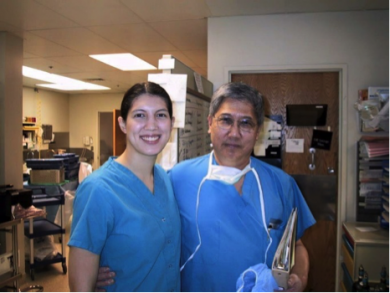At the crossroads in surgical education
Heather Yeo, MD, MHS, assistant professor of surgery and assistant professor of public health, wrote a guest post on the Association of Women Surgeons blog. Read the original here.
Over the last four decades since my father completed his training as a general surgeon at UC Irvine, the training system has changed significantly. Residents no longer have the autonomy they once had, time is at a premium, work hours are closely regulated, there is increased pressure to generate revenue and work quickly, the medical legal system is increasingly complex, and there is an increase in the variety and type of skills needed to perform many surgical procedures—all of which must be learned in a relatively short training period.
Early this month the Association for Surgical Educators (ASE) and the Association of Program Directors in Surgery (APDS) hosted surgical education week where leaders in surgical education talked about moving the system forward and adjusting to many of the current changes and challenges. It is clear large changes must happen.
In fact, just this week (4/25/16) the American Board of Surgery issued a statement on their goals for “Residency Redesign”:
We currently envision a framework built upon a general surgical “Core,” followed by additional training in general surgery or a surgical subspecialty (“Plus” years), as is currently done in existing Early Specialization Programs. This structure would have the following characteristics:
- Learner-dependent education, rather than educator-dependent
- Competency-based assessment tools, i.e., not relying solely on number of cases to measure competency
- A structure such as Entrustable Professional Activities (EPAs), in which modules are embedded with defined actions to gauge progression and completion
- Enhanced surgical experience with greater early operative exposure, both in numbers and complexity
- Faculty development to enrich teaching and assessment of technical skills and competence both in and out of the operating room
- Curricular and evaluation standards in the Plus years of training, including in the surgical specialties, to build collaboratively a seamless path from the Core into these years
As someone who researched surgical education and attrition during surgical residency, as a RWJ Clinical scholar, the way we train and retain surgeons has always interested me. As an academic surgeon, I believe it is our duty to pay attention to how and who we train to be our next generation of surgeons. Already leaders such as @meklingensmith and @amaliacochran have made great strides in understanding how to move our training programs forward, but there is much work to be done.
Recently, I have started conversations with some of our academic leaders from around the country and it is clear that certain things need to happen to face several issues on the horizon.
- We need to improve skills training and assessment in and outside of the OR
- We need to assess readiness for practice
- We need to use and adjust to new technologies
- We need to encourage talented individuals to join surgery, and support those who are skilled and motivated in the appropriate way
I believe the Board’s statement is a good start towards drawing attention and clarifying these goals. It will be important to learn from leaders in other professions and specialties as we move forward, as well as to critically evaluate current strategies. This is a critical time in general surgery and involvement is needed from within and outside our profession.



